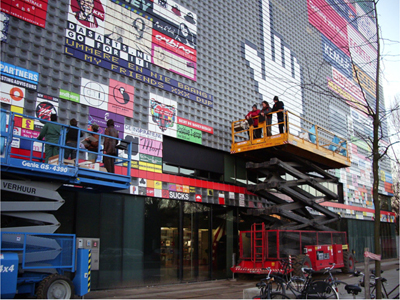Museum of the Image
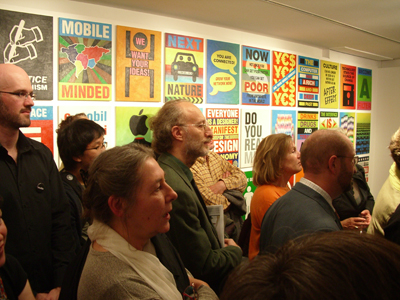
Exhibition Concept & Design
Developments are taking place in the exhibition sector now that the museum is no longer the sole platform for exhibiting. The internet, the street, the department store and the market all offer space for the presentation of art and culture. Factory halls, prisons and other industrial spaces are particularly attractive for challenging public presentations. In addition, virtual space can also provide, alongside physical space, a stage for this, with apps and augmented reality applications.
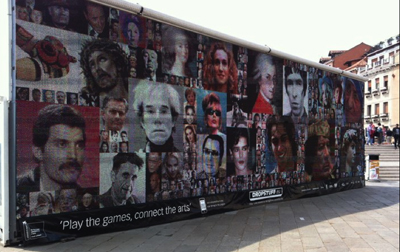
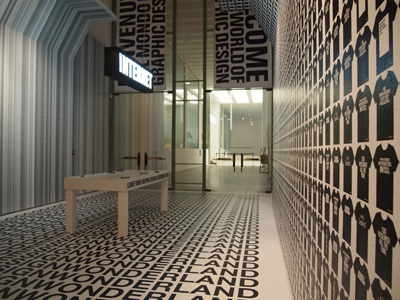

MOTI, Museum of the Image
MOTI, Museum Of The Image is the leading authority on Image Culture. A museum for image culture belongs in a time where disciplines merge together and an explosive amount of images have become a part of our daily lives. The world of visual communication has become a sanctuary for text, images, dynamism and change. As a director slash designer, I create most of the (visual) concepts for the exhibitions of MOTI.
The MOTI website http://www.motimuseum.com
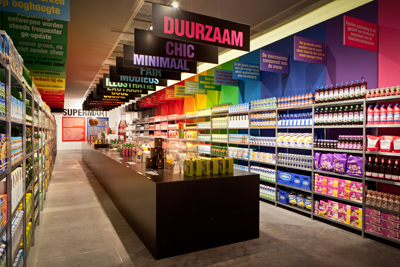
SupermArt
By presenting icons such as Coca Cola, Absolut, Kikkoman, Grolsch, Nivea, Heinz and Toblerone in the museum, a different kind of supermarket emerges. SupermArt deliberately places the aesthetic side to the supermarket on display. In the sixties (Pop-Art) packaging was deliberately presented as an object of art, with the aim to free art from its staid conventions. This exhibition is turning that idea on its head. The presentation uses museum conventions to draw special attention to something ostensibly commonplace: the cheap, disposable, the gimmicky, glamorous and the business aspects of packaging design.
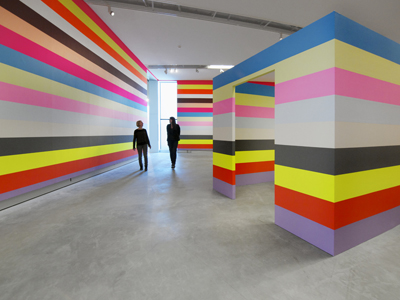
Jan van der Ploeg
Overwhelming, grand and vibrant: words that apply to the work of Jan van der Ploeg. You get carried away by the grandeur of his images. Imagine yourself in an utopian universe of colors and contrasts! Van der Ploeg is connecting art and commerce. He reflects on the paradise of brands, fashion and materials with his paintings and faces the success formula of the contemporary society of repetition. Van der Ploeg is inspired by art styles and movements from the past century and therefore connects the 20th with the 21st century. He creates graphic dream worlds in physical space.
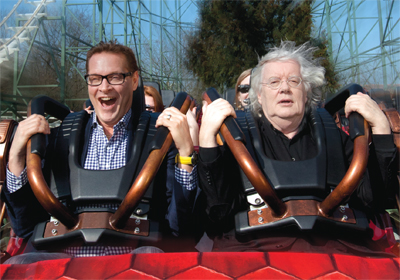
Rollercoaster, the Image in the 21st Century
In the exhibition Rollercoaster, the Image in the 21st Century, MOTI showed for the first time how image culture is developing. From simple snapshots to the layered and well-wrought works of art. Journalist images are placed on a museum pedestal. The ANP photograph has undergone an enormous development in recent decades. The status of the journalistic image is highly elevated and represents and cursory media world in which we live.

More than 4000 credit cards ordered on color
Credit on Color
Credit cards and personal debit cards were invented by banks. Nowadays, it is no longer just banks that use this little plastic card measuring 45 by 86 mm. Shops, insurers, cafés, libraries, museums, cinemas, airline companies and public transport have all discovered the plastic card.The cards are all designed in a unique way, yet the standard size, the rounded corners and the magnetic strip on the back make the cards instantly recognisable. All these cards have one thing in common: they represent a personal credit. They stand for your money, your discount, your subscription and your membership. And so the cards in your wallet determine your identity. The cards in Credit on Color were obtained from banks and major retail stores, but also from the public. Personalised debit cards, showing photographs of pets, also find a place in the exhibition.
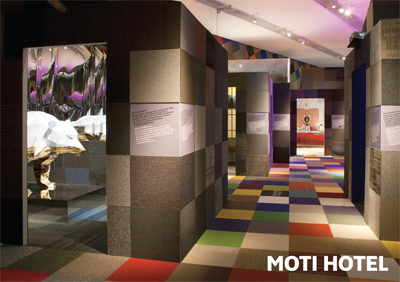
MOTI HOTEL
MOTI HOTEL showed MOTI’s collection in a unique and inspiring way. The museum possesses an important collection on the development of visual culture. Twenty international and national designers were asked to react to these collection items, with their own visions and distinctive styles. In this artistic hotel, visitors were guided through a surprising interior based on art, design, architecture, gaming and fashion.
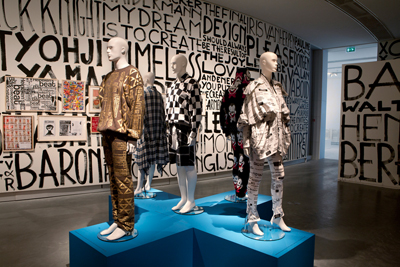
Couture Graphique
Couture Graphique is the first exhibition ever about fashion and graphic design; an exhibition in which we present the communicative and decorative aspects of clothing and accessories as a means of communication.

Welcome to the Imagesphere
The on- and offline world have melted together. Today, digital is the new normal: we all speak the digital language fluently. This all due to the digital revolution, at least that’s what we think… The truth? We’ve only taken our first steps into the digital age and the revolution is about to begin! Exhibition Welcome to the Imagesphere shows the developments in digital visual culture. Discover the great changes that still lie ahead!

Fashion exhibition painted by Gijs Frieling and Job Wouters, 2013

Walking through a physical database of designs by Niels Schrader, 2009
Dutch Design Database
Around 1950, there were just over 100 graphic designers in the Netherlands. Sixty years later, there are more than 5000 people active in the graphic design sector. The exhibition Dutch Design Database showed how the profession has developed from a few individuals to a sector with 180 agencies with 5 or more employees and a total turnover of more than 400 million euro. The exhibition was a database that is displayed in both a physical and in a digital, interactive form. The digital database contains about 15,000 designs. The database can be searched digitally and individual works can be viewed. The digital presentation also made links between works according to designer, design or medium choice.
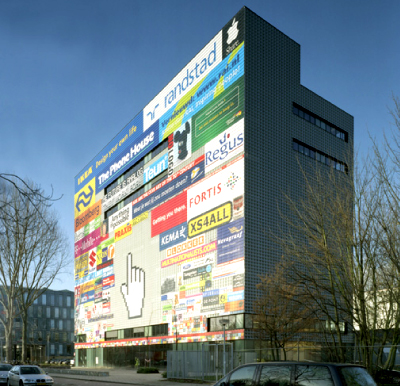
Artvertising
The project caused a lot of controversy, in the media as well as in the art and advertising worlds – but also at the city district offices and the building inspector’s office, in the spheres of architecture and design, and among artists and neighbourhood residents. Organisations, movements, and individuals who have associated themselves with a particular cultural category sometimes reacted violently to the project. And that comes as no surprise. Artvertising falls outside the existing ideas about what a work of art is supposed to do, what graphic design is about or what an architectural object is, and that causes a stir. The project was inspired by The Million Dollar Homepage. http://www.milliondollarhomepage.com/
